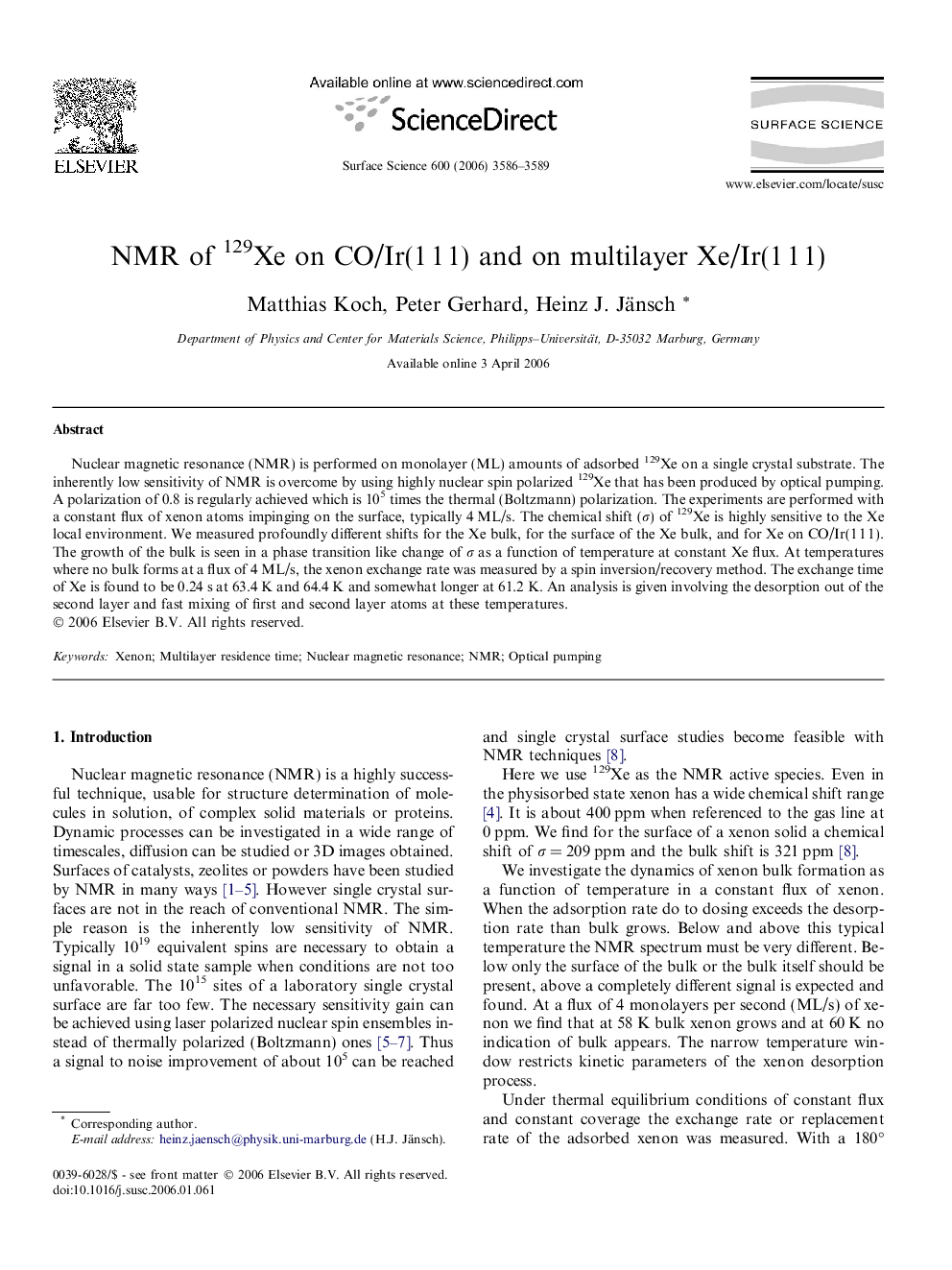| Article ID | Journal | Published Year | Pages | File Type |
|---|---|---|---|---|
| 5426386 | Surface Science | 2006 | 4 Pages |
Nuclear magnetic resonance (NMR) is performed on monolayer (ML) amounts of adsorbed 129Xe on a single crystal substrate. The inherently low sensitivity of NMR is overcome by using highly nuclear spin polarized 129Xe that has been produced by optical pumping. A polarization of 0.8 is regularly achieved which is 105 times the thermal (Boltzmann) polarization. The experiments are performed with a constant flux of xenon atoms impinging on the surface, typically 4Â ML/s. The chemical shift (Ï) of 129Xe is highly sensitive to the Xe local environment. We measured profoundly different shifts for the Xe bulk, for the surface of the Xe bulk, and for Xe on CO/Ir(1Â 1Â 1). The growth of the bulk is seen in a phase transition like change of Ï as a function of temperature at constant Xe flux. At temperatures where no bulk forms at a flux of 4 ML/s, the xenon exchange rate was measured by a spin inversion/recovery method. The exchange time of Xe is found to be 0.24Â s at 63.4Â K and 64.4Â K and somewhat longer at 61.2Â K. An analysis is given involving the desorption out of the second layer and fast mixing of first and second layer atoms at these temperatures.
